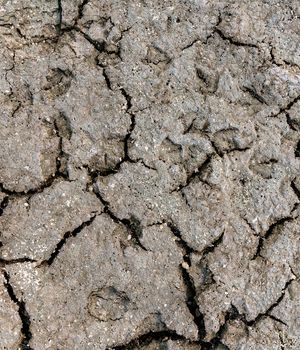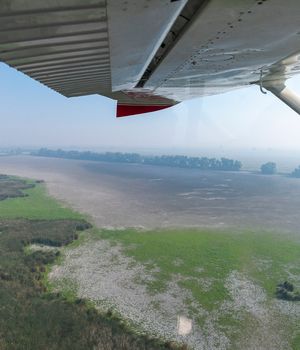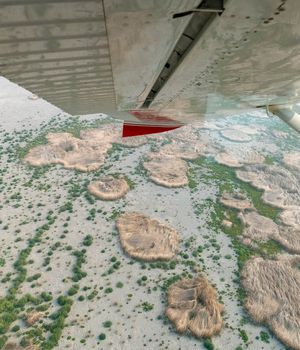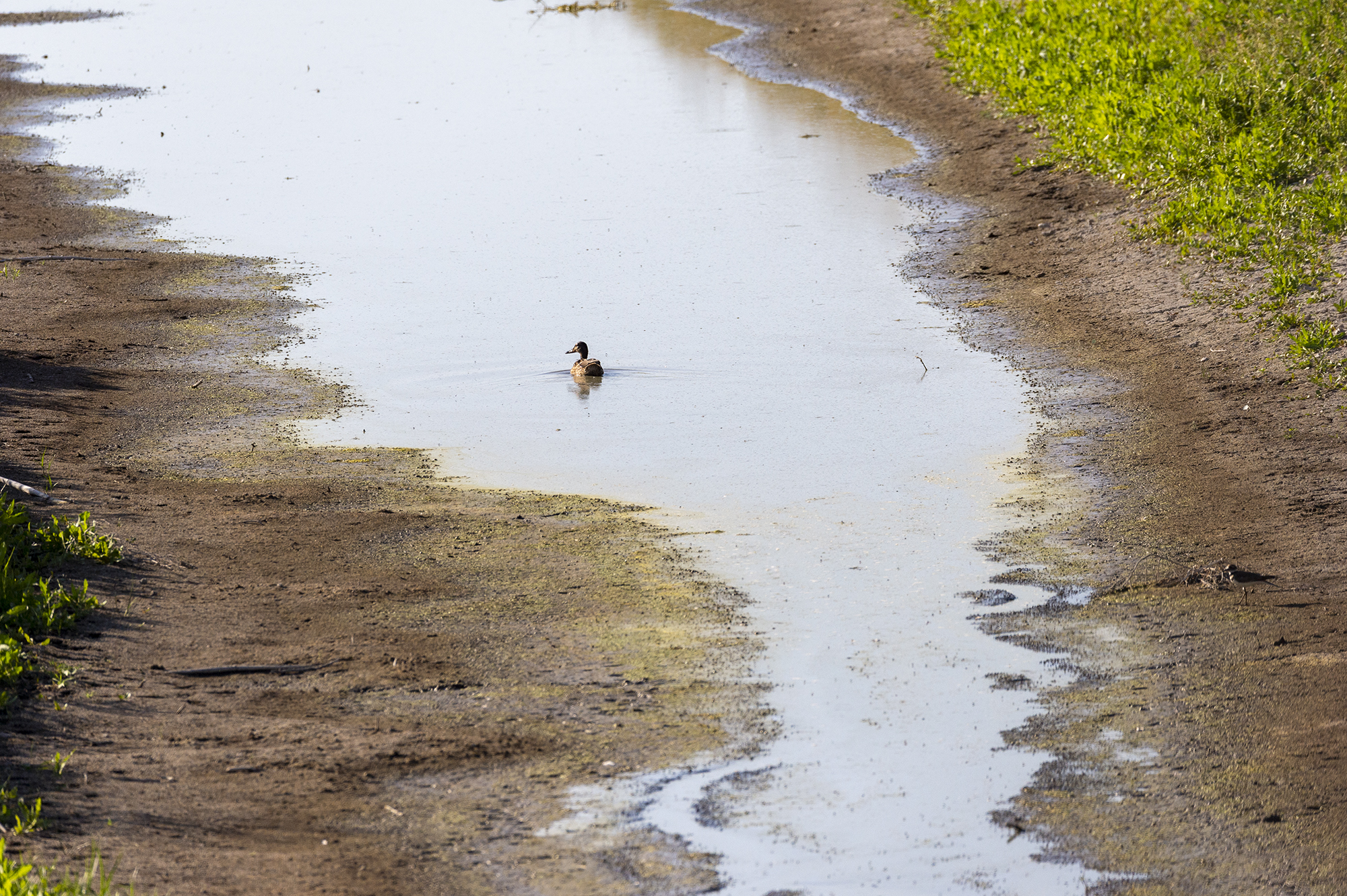
Aug 12, 2021
Klamath update: Lower Klamath drying up, water shifting at Tule Lake

A mallard swims in the little remaining water at the Lower Klamath NWR.
Photos and story by Holly Heyser; flight for aerial photography provided by Elizabeth Huggins
The Lower Klamath National Wildlife Refuge is on course to dry up before the rains come - a situation made clear during our recent visit to the Klamath Basin.
California Waterfowl is attempting to buy water rights for the refuge, which is always last in line for water and gets little to nothing even in good years. Some of that water could be delivered this year, but we are still awaiting a response to our permit application. The public comment period closed May 28.
An estimated 1,000 duck broods at Lower Klamath - not 1,000 ducklings, but 1,000 broods - are likely a near complete loss as their last sanctuary literally evaporates out from underneath them.
Nature has made the best of the situation, providing a buffet of ducklings to the refuge's coyotes, whose tracks are interspersed with duck footprints literally everywhere water is receding.
Above: The duckling running along the coyote tracks was not only too young to fly, but too young to quack, instead cheeping as it ran away. The mallard swimming through algae is a hen that couldn't fly. Photos by Holly Heyser
WHY IS THIS HAPPENING? It's not the drought. Click here for more information.
Unit 2 has diminishing water in its main drain, and Sheepy Lake - the last wet wetland on the refuge - is shrinking. There is effectively a land bridge to Tern Island, which means most tern, pelican, gull, shorebird and cormorant broods were lost to predators taking advantage of unprecedented access. Tern Island is the closest thing remaining to the vast and legendary floating islands of what was once Lower Klamath Lake.
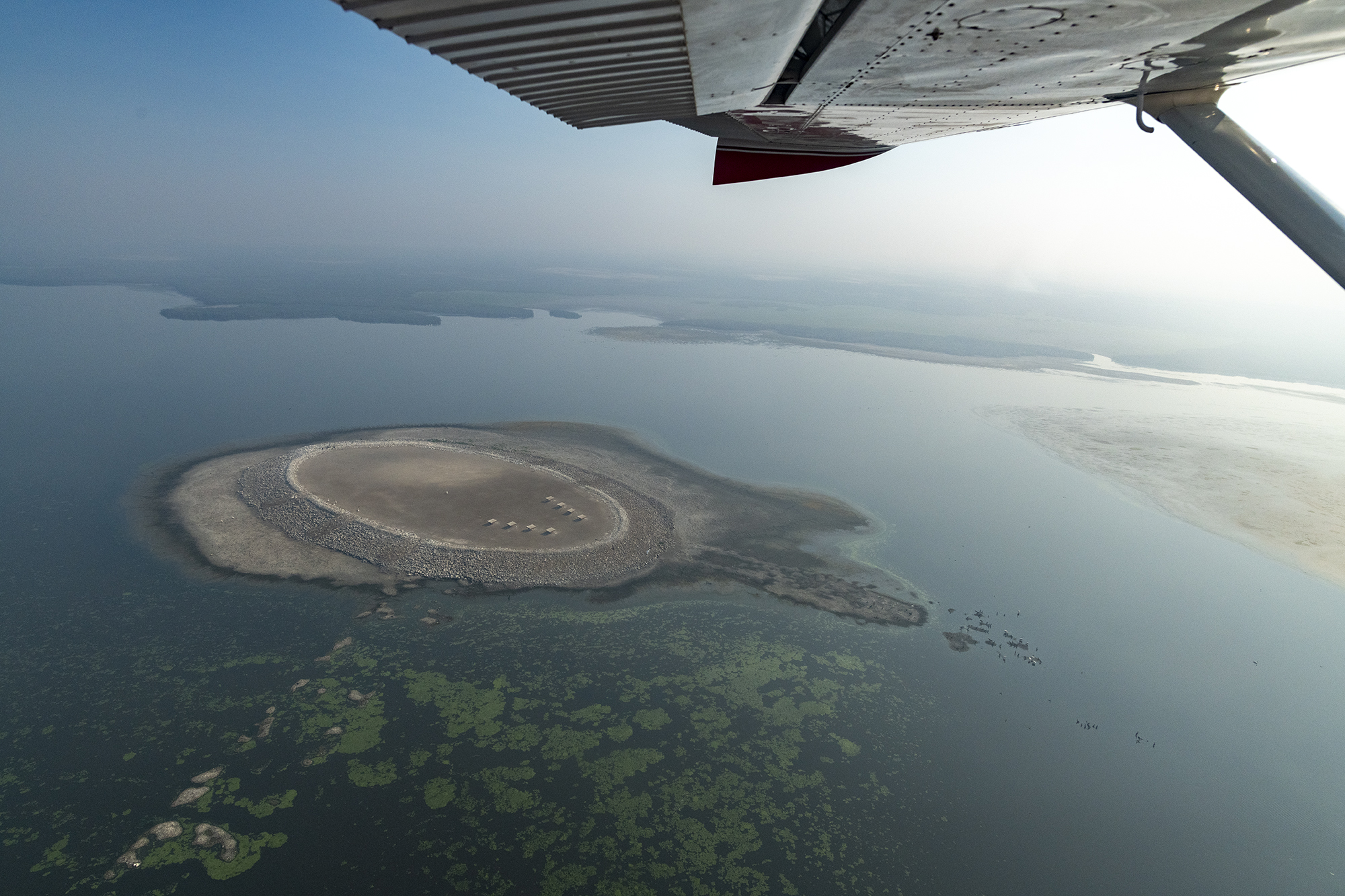
Tern Island is effectively land-bridged.
Broods are not the only casualties of disappearing water; it also threatens molting ducks, which lose all of their wing feathers at once each summer and are unable to fly for 30-60 days, leaving them stuck with whatever habitat they're in.

Four other mallards flew from this tiny spit of rock on the disappearing Sheepy Lake, but this mature greenhead is still molting, so he's stuck here.
On the ground, the vastness of the water loss at Sheepy Lake is striking.
The rest of the refuge is bone dry, effectively wiping out units that had provided nesting, brood-rearing and molting habitat. One unit that was being converted from agricultural fields back to wetlands has now been reclaimed by invasive vegetation. An ibis colony has disappeared.
There is water to the east at the Tule Lake National Wildlife Refuge, but it has also waned for a number of reasons.
Tule Lake's Sump 1A was intentionally drained and its water sent to Sump 1B, both to reduce the shallow-water acreage where avian botulism might occur this summer and to promote the future growth of waterfowl food plants, rejuvenating the wetland. Smartweed has already begun to grow.
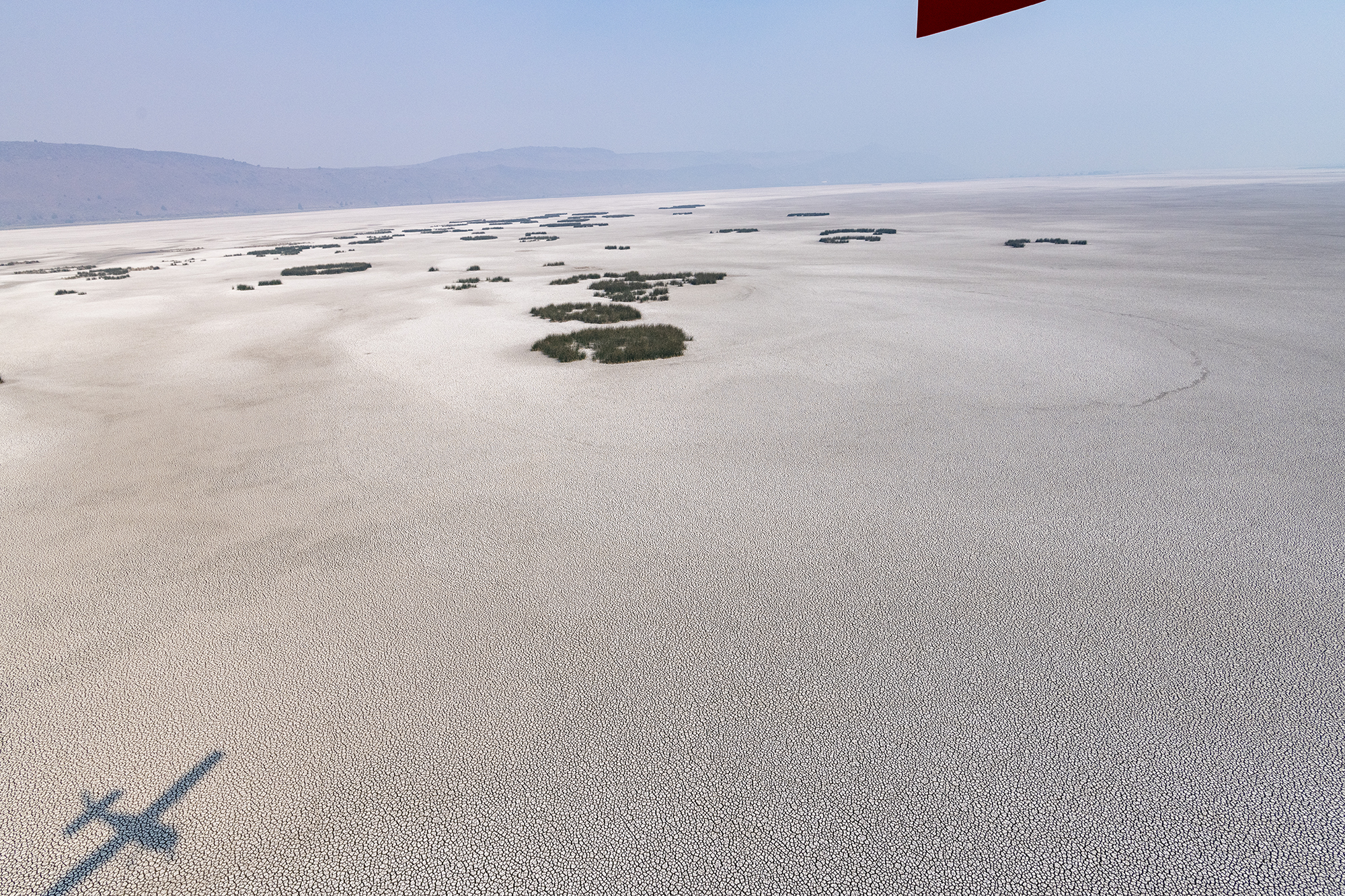

Irrigators used the water while it was in transport. When Sump 1A dried up faster than expected, the deeper Sump 1B was tapped for irrigation as well.
An entire colony of eared grebes - 750 active nests - was lost during this time.
Sump 1B has begun to refill, both with water provided by irrigators to begin replacing what they used, and with a "loan" of water from PacifiCorp, which will help prevent a remnant population of federally endangered suckerfish from dying.
Avian botulism has not yet surfaced - it is believed that the replacement flows flushed out much of the botulism that may have been present. The PacifiCorp loan water is expected to raise water levels. Sump 1B will provide about 3,500 acres of habitat for molting and migrating birds. Combined, and given sufficient water, Lower Klamath and Tule Lake can provide 40,000 acres of wetland habitat.

Waterfowl on the diminished shoreline of Sump 1B



